Ditapis dengan
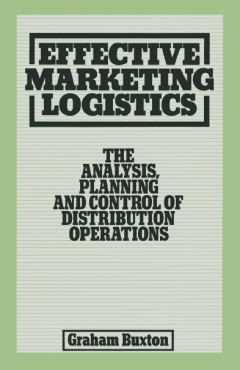
Effective marketing logistics: the analysis, planning and control of distribu…
- Edisi
- -
- ISBN/ISSN
- 978-1-349-02101-7
- Deskripsi Fisik
- -
- Judul Seri
- -
- No. Panggil
- TXT LO BUX e
- Edisi
- -
- ISBN/ISSN
- 978-1-349-02101-7
- Deskripsi Fisik
- -
- Judul Seri
- -
- No. Panggil
- TXT LO BUX e

the Palgrave handbook of humanitarian logistics and supply chain management
- Edisi
- -
- ISBN/ISSN
- 978-1-137-59099-2
- Deskripsi Fisik
- -
- Judul Seri
- -
- No. Panggil
- TXT LO KOV p
- Edisi
- -
- ISBN/ISSN
- 978-1-137-59099-2
- Deskripsi Fisik
- -
- Judul Seri
- -
- No. Panggil
- TXT LO KOV p

Marketing logistics
- Edisi
- 2
- ISBN/ISSN
- 0-7506-5224-1
- Deskripsi Fisik
- -
- Judul Seri
- -
- No. Panggil
- TXT LO PEC m
- Edisi
- 2
- ISBN/ISSN
- 0-7506-5224-1
- Deskripsi Fisik
- -
- Judul Seri
- -
- No. Panggil
- TXT LO PEC m
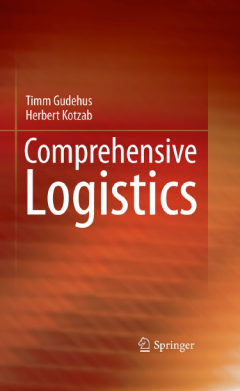
Comprehensive logistics
- Edisi
- -
- ISBN/ISSN
- 978-3-540-68652-1
- Deskripsi Fisik
- -
- Judul Seri
- -
- No. Panggil
- TXT LO KOT c
- Edisi
- -
- ISBN/ISSN
- 978-3-540-68652-1
- Deskripsi Fisik
- -
- Judul Seri
- -
- No. Panggil
- TXT LO KOT c

Seaports in international law
- Edisi
- -
- ISBN/ISSN
- 978-3-319-60396-4
- Deskripsi Fisik
- -
- Judul Seri
- -
- No. Panggil
- TXT MR CAS s
- Edisi
- -
- ISBN/ISSN
- 978-3-319-60396-4
- Deskripsi Fisik
- -
- Judul Seri
- -
- No. Panggil
- TXT MR CAS s
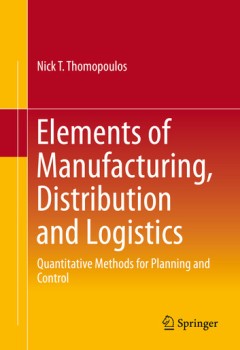
Elements of danufacturing, distribution and logistics: quantitative methods f…
- Edisi
- -
- ISBN/ISSN
- 978-3-319-26862-0
- Deskripsi Fisik
- -
- Judul Seri
- -
- No. Panggil
- TXT LO THO e
- Edisi
- -
- ISBN/ISSN
- 978-3-319-26862-0
- Deskripsi Fisik
- -
- Judul Seri
- -
- No. Panggil
- TXT LO THO e
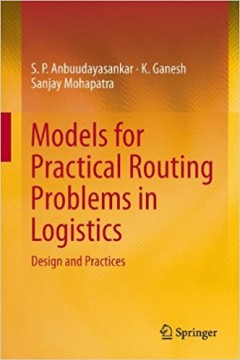
Models for practical routing problems in logistics: design and practice
- Edisi
- -
- ISBN/ISSN
- 978-3-319-05035-5
- Deskripsi Fisik
- -
- Judul Seri
- -
- No. Panggil
- TXT LO ANB m
- Edisi
- -
- ISBN/ISSN
- 978-3-319-05035-5
- Deskripsi Fisik
- -
- Judul Seri
- -
- No. Panggil
- TXT LO ANB m
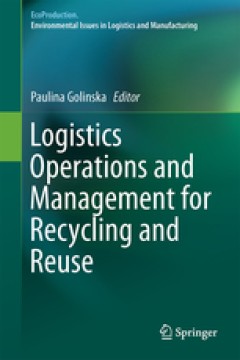
Logistics operations, supply chain management and sustainability
- Edisi
- -
- ISBN/ISSN
- 978-3-319-07287-6
- Deskripsi Fisik
- -
- Judul Seri
- -
- No. Panggil
- TXT LO Gol l
- Edisi
- -
- ISBN/ISSN
- 978-3-319-07287-6
- Deskripsi Fisik
- -
- Judul Seri
- -
- No. Panggil
- TXT LO Gol l
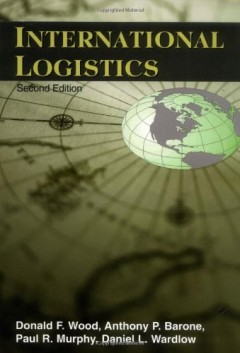
International logistics
- Edisi
- -
- ISBN/ISSN
- 978-1-4615-2085-6
- Deskripsi Fisik
- -
- Judul Seri
- -
- No. Panggil
- TXT LO Woo i
- Edisi
- -
- ISBN/ISSN
- 978-1-4615-2085-6
- Deskripsi Fisik
- -
- Judul Seri
- -
- No. Panggil
- TXT LO Woo i
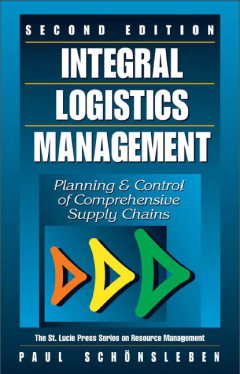
Integral logistics management: planning and control of comprehensive supply c…
- Edisi
- -
- ISBN/ISSN
- 1-57444-355-0
- Deskripsi Fisik
- -
- Judul Seri
- -
- No. Panggil
- TXT LO Sch i
- Edisi
- -
- ISBN/ISSN
- 1-57444-355-0
- Deskripsi Fisik
- -
- Judul Seri
- -
- No. Panggil
- TXT LO Sch i
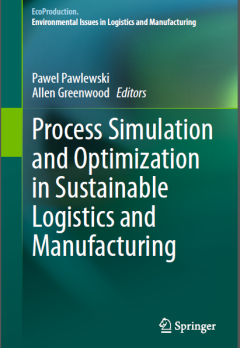
Process simulation and optimization in sustainable logistics and manufacturing
- Edisi
- -
- ISBN/ISSN
- 978-3-319-07347-7
- Deskripsi Fisik
- -
- Judul Seri
- -
- No. Panggil
- TXT LO Paw p
- Edisi
- -
- ISBN/ISSN
- 978-3-319-07347-7
- Deskripsi Fisik
- -
- Judul Seri
- -
- No. Panggil
- TXT LO Paw p
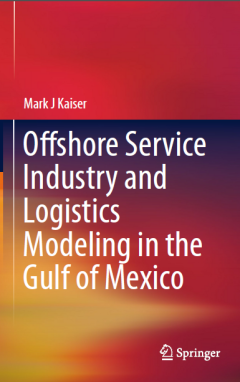
Offshore service industry and logistics modeling in the gulf of mexico
- Edisi
- -
- ISBN/ISSN
- 978-3-319-17013-8
- Deskripsi Fisik
- -
- Judul Seri
- -
- No. Panggil
- TXT LO Kai o
- Edisi
- -
- ISBN/ISSN
- 978-3-319-17013-8
- Deskripsi Fisik
- -
- Judul Seri
- -
- No. Panggil
- TXT LO Kai o
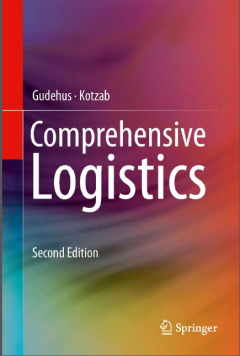
Comprehensive logistics
- Edisi
- -
- ISBN/ISSN
- 978-3-642-24367-7
- Deskripsi Fisik
- -
- Judul Seri
- -
- No. Panggil
- TXT LO Gud c
- Edisi
- -
- ISBN/ISSN
- 978-3-642-24367-7
- Deskripsi Fisik
- -
- Judul Seri
- -
- No. Panggil
- TXT LO Gud c
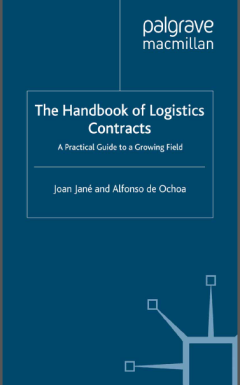
The handbook of logistics contracts: a practical guide to growing field
- Edisi
- -
- ISBN/ISSN
- 978-0-230-59758-7
- Deskripsi Fisik
- -
- Judul Seri
- -
- No. Panggil
- TXT LO Jan t
- Edisi
- -
- ISBN/ISSN
- 978-0-230-59758-7
- Deskripsi Fisik
- -
- Judul Seri
- -
- No. Panggil
- TXT LO Jan t
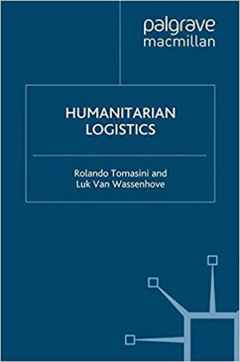
Humanitarian logistics
- Edisi
- -
- ISBN/ISSN
- 978-0-230-23348-5
- Deskripsi Fisik
- -
- Judul Seri
- -
- No. Panggil
- TXT LO Tom h
- Edisi
- -
- ISBN/ISSN
- 978-0-230-23348-5
- Deskripsi Fisik
- -
- Judul Seri
- -
- No. Panggil
- TXT LO Tom h
Indonesian-french seminar logistics and cold chain
- Edisi
- -
- ISBN/ISSN
- -
- Deskripsi Fisik
- 24 pages
- Judul Seri
- -
- No. Panggil
- PPT PO ELV i
- Edisi
- -
- ISBN/ISSN
- -
- Deskripsi Fisik
- 24 pages
- Judul Seri
- -
- No. Panggil
- PPT PO ELV i

Supply chain interfaces between a port utilizing organisation and port operator
This research revolves around understanding the interfaces of ports in supply chains. The main aim of the research is to explore the role of ports within supply chains.
- Edisi
- Volume 19 · Number 1 · 2014 · 79–97
- ISBN/ISSN
- -
- Deskripsi Fisik
- 21 p .
- Judul Seri
- Supply Chain Management: An International Journal
- No. Panggil
- ATC LO BEN s

The moderating role of supply network structure on the customer integration-e…
The purpose of this paper is to study whether a fast supply network structure interacts with customer integration (CI) by positively moderating the relationship between CI and efficiency performance.
- Edisi
- Vol. 33 No. 4, 2013
- ISBN/ISSN
- -
- Deskripsi Fisik
- 24 p.
- Judul Seri
- International Journal of Operations & Production Management
- No. Panggil
- ATC LO DAN t

Challenges to logistics development: the case of a Third World country – Ba…
The past two decades have witnessed a number of important developments in the world business affecting business firms in both developed and less developed countries (LDCs). A relentless search for the “best” possible mix of inputs such as cheap labour, raw materials, and energy, among others, by many advanced country corporations, has resulted in the decoupling of comparative advantages fro…
- Edisi
- Vol. 27 No. 1, 1997
- ISBN/ISSN
- -
- Deskripsi Fisik
- 23 p.
- Judul Seri
- International Journal of Physical Distribution & Logistics Management
- No. Panggil
- ATC LO ABD c

Container terminal operation and operations research – a classification and…
In the last four decades the container as an essential part of a unitload- concept has achieved undoubted importance in international sea freight transportation. With ever increasing containerization the number of seaport container terminals and competition among them have become quite remarkable. Operations are nowadays unthinkable without effective and efficient use of information technology …
- Edisi
- -
- ISBN/ISSN
- -
- Deskripsi Fisik
- 47 p.
- Judul Seri
- -
- No. Panggil
- ATC LO STA c

The design of logistics operations for the Olympic Games
This paper aims to focus on the design of the organization, processes, and systems of Olympic logistics.
- Edisi
- Vol. 36 No. 8, 2006
- ISBN/ISSN
- -
- Deskripsi Fisik
- 24 p.
- Judul Seri
- International Journal of Physical Distribution & Logistics Management
- No. Panggil
- ATC LO TZI t

Sustainability and supply chain infrastructure development
This study aims to examine logistics infrastructure, trade differences, and environmental and social equity factors, for a set of 89 countries.
- Edisi
- Vol. 50 No. 10, 2012
- ISBN/ISSN
- -
- Deskripsi Fisik
- 22 p.
- Judul Seri
- Management Decision
- No. Panggil
- ATC LO MAR s

The design of logistics operations for the Olympic Games
This paper aims to focus on the design of the organization, processes, and systems of Olympic logistics.
- Edisi
- Vol. 36 No. 8, 2006
- ISBN/ISSN
- -
- Deskripsi Fisik
- 24 p.
- Judul Seri
- International Journal of Physical Distribution & Logistics Management
- No. Panggil
- ATC LO TZI t

Applied improvisation training for disaster readiness and response
The purpose of this paper is to introduce applied improvisation (AI) as a tool for training humanitarian aid workers. AI incorporates principles and practices from improvisational theatre into facilitation and training. It is an excellent modality for training aid workers to deal with crisis and disaster scenarios where decision-making and collaboration under pressure are critical.
- Edisi
- Vol. 5 No. 1, 2015
- ISBN/ISSN
- -
- Deskripsi Fisik
- 25 p.
- Judul Seri
- Journal of Humanitarian Logistics and Supply Chain Management
- No. Panggil
- ATC LO VAN a

Application of humanitarian last mile distribution model
The purpose of this paper is to extend a routing model so that it may be applied to a real case study of material deliveries involved in a development operation, typical of regular humanitarian logistics, and to explore the impact of variations in available logistic assets.
- Edisi
- Vol. 4 No. 1, 2014
- ISBN/ISSN
- -
- Deskripsi Fisik
- 19 p.
- Judul Seri
- Journal of Humanitarian Logistics and Supply Chain Management
- No. Panggil
- ATC LO PER a

Application of AIS data in service vessel activity description in the Gulf of…
Offshore exploration and production in the Gulf of Mexico (GOM) is supported by a large number of service vessels characterized by complex logistical patterns, a large number of shorebases and demand points across an expansive geographic area, and dynamic time-varying activities. No quantitative data is available on the spatial and temporal distributions of service vessel activity in the GOM, a…
- Edisi
- Vol. 16, 4, 436–466
- ISBN/ISSN
- -
- Deskripsi Fisik
- 31 p.
- Judul Seri
- Original Article
- No. Panggil
- ATC LO NAR a

Analytical model for performance measurement in healthcare sector of Punjab
The aim of this paper is to develop a model for analyzing the performance of health care service providers using analytical modeling.
- Edisi
- Vol. 10 No. 2, 2015
- ISBN/ISSN
- -
- Deskripsi Fisik
- 14 p.
- Judul Seri
- Journal of Modelling in Management
- No. Panggil
- ATC LO SIN a

An uncertain model for RCPSP with solution robustness focusing on logistics p…
Logistics project scheduling problem in indeterminate environment is gaining more and more attention in recent years. One effective way to cope with indeterminacy is to develop robust baseline schedule. There exist many related researches on building robust schedule in stochastic environment, where historical data is sufficient to learn probability distributions. However, when historical data i…
- Edisi
- -
- ISBN/ISSN
- -
- Deskripsi Fisik
- 13 p.
- Judul Seri
- Original article
- No. Panggil
- ATC LO HUA a

An optimization approach to risk decision-making of closed-loop logistics bas…
In green logistics operation, all logistics processes form a bidirectional closed-loop topology. In order to model and optimize such a kind of structure, a standardized closed-loop logistics operation reference model is built which aims to provide supply chain managers with general analysis. Based on the reference model, potential risks of closed-loop logistics chain can be analyzed including n…
- Edisi
- Vol. 61, No. 10, October 2012
- ISBN/ISSN
- -
- Deskripsi Fisik
- 32 p.
- Judul Seri
- Optimization: A Journal of Mathematical Programming and Operations Research
- No. Panggil
- ATC LO ZHA a

An object-based relational data base system using re-configurable finance and…
Any manufacturing information system today must be able to both “reconfigure” and “reengineer” operations in a costeffective way. The objective of this paper is to propose an enterprise resource planning (ERP) system based on the re-configurable characteristics of material objects (MO) and finance objects (FO). The implementation of this information system is based on the object technol…
- Edisi
- Volume 15 · Number 8 · 2004
- ISBN/ISSN
- -
- Deskripsi Fisik
- 23 p.
- Judul Seri
- Journal of Manufacturing Technology Management
- No. Panggil
- ATC LO LAU a

Logistics Trends in South Africa
The purpose of this article is to explore the latest trends in logistics in South Africa. In order to enhance the development of logistics, not only in South Africa, but also internationally, it is important to identify the latest trends and do benchmarking against the best practices.
- Edisi
- Vol. 24 Iss 7 pp. 4 - 14
- ISBN/ISSN
- -
- Deskripsi Fisik
- 13 p.
- Judul Seri
- International Journal of Physical Distribution & Logistics Management
- No. Panggil
- ATC LO NAG l

Reverse logistics in humanitarian operations: challenges and opportunities
Whilst implementation of a broad range of reverse logistics (RL) practices is increasingly the norm within commercial supply chain management, they have had limited impact in the humanitarian logistics (HL) sector. The purpose of this paper is to analyse the challenges and opportunities for the application of RL in a HL context.
- Edisi
- Vol. 5 No. 2, 2015
- ISBN/ISSN
- -
- Deskripsi Fisik
- 27 p.
- Judul Seri
- Journal of Humanitarian Logistics and Supply Chain Management
- No. Panggil
- ATC LO YON r

Reverse logistics in Czech companies: increasing interest in performance meas…
The purpose of this paper is to explore whether Czech companies believe that value is being generated by reverse logistics (RL), and whether (and how) they track its costs and benefits. The quality of performance measurement of RL was related to three corporate attributes. The findings were then compared to the results of an older study to describe developments over the past five years, and to …
- Edisi
- Vol. 35 No. 8, 2012
- ISBN/ISSN
- -
- Deskripsi Fisik
- 19 p.
- Judul Seri
- Management Research Review
- No. Panggil
- ATC LO KAP r

An emergency order allocation model based on multi-provider in two-echelon lo…
On one side, the purpose of this paper is to numerically analyze the emergency order allocation mechanism and help managers to understand the relationship between the emergency coefficient, uncertainty and emergency cost in two-echelon logistics service supply chain. On the other side, the purpose of this paper is to help managers understand how to deal with the problem of order allocation in t…
- Edisi
- Vol. 16 Iss 6 pp. 391 - 400
- ISBN/ISSN
- 1359-8546
- Deskripsi Fisik
- 12 p.
- Judul Seri
- Supply Chain Management: An International Journal
- No. Panggil
- ATC LO CAI a

An efficiency analysis of cargo-handling operations at container terminals
In this paper, a Data Envelopment Analysis approach is used to assess the efficiency of cargo-handling operations at a container terminal and study the factors influencing it. The aim is to provide recommendations that would allow a container terminal to reach high technical efficiency scores, in order to increase its inner productivity. A three-stage methodological framework is proposed to ana…
- Edisi
- -
- ISBN/ISSN
- -
- Deskripsi Fisik
- 21 p.
- Judul Seri
- -
- No. Panggil
- ATC LO LUN a

Virtual logistics An introduction and overview of the concepts
Virtual logistics allows for economies of scale to be realised through the use of shared resources, while still retaining the benefits of single user control. Increased resource utilisation is made possible through the more flexible allocation of resources to demand and lead time reduction is made possible through the improved management of operational priorities.
- Edisi
- Vol. 28 No. 7, 1998
- ISBN/ISSN
- -
- Deskripsi Fisik
- 24 p.
- Judul Seri
- International Journal of Physical Distribution & Logistics Management
- No. Panggil
- ATC LO CLA v

Advantages of intermodal logistics platforms : insights from a Spanish platform
The purpose of this paper is to highlight the advantages that an intermodal logistics platform may provide to companies integrating a supply chain, both to manufacturers/distributors and to logistics providers.
- Edisi
- Vol. 14 Iss 6 pp. 418 - 421
- ISBN/ISSN
- 1359-8546
- Deskripsi Fisik
- 6 p.
- Judul Seri
- Supply Chain Management: An International Journal
- No. Panggil
- ATC LO FIE a

Modelling interrelationships between logistics and transportation operations …
This paper aims to present a system dynamics model for the interdependencies between logistics strategies and freight transport. As efficient freight transport operations are a crucial part withinsecuringthecompetitivenessofacompany,the“right”logisticsstrategyplaysakeyrolewithin realizationofefficienttransportationmovementsloweringenvironmentalimpacts.
- Edisi
- Vol. 38 No. 5, 2015
- ISBN/ISSN
- -
- Deskripsi Fisik
- 37 p.
- Judul Seri
- Management Research Review
- No. Panggil
- ATC LO OPH m

Modelling the consequences of a strategic supply chain initiative of an autom…
Describes the use of a decision support system (DSS) in part of a strategic supply chain initiative of an international automotive aftermarket organisation undertaken in 1996-97. The strategic initiative consisted of four distinct stages; a review of the current state, definition of the future vision, development of the operational blueprint and its implementation. A simulation based decision s…
- Edisi
- Vol. 29 No. 9, 1999
- ISBN/ISSN
- -
- Deskripsi Fisik
- 18 p.
- Judul Seri
- International Journal of Physical Distribution & Logistics Management
- No. Panggil
- ATC LO NAI m

Logistics service characteristics and supply chain priorities for freight man…
The purpose of this paper is to examine how the type of logistics services required by firms is related to the freight characteristics, and to the cost and other dimensions of the services in Mexico.
- Edisi
- Vol. 27 No. 2, 2014
- ISBN/ISSN
- -
- Deskripsi Fisik
- 32 p.
- Judul Seri
- Academia Revista Latinoamericana de Administración
- No. Panggil
- ATC LO CAS l

New research : a new forecasting model for the diffusion of ISO 9000 standard…
ISO 9000 standards for quality system management are involving a higher and higher number of enterprises and organizations. This paper presents a detailed analysis of certification diffusion in Italy and in some European countries with similar economic structures. Benchmarking and evolution forecasts are based on the “logistic model”, traditionally used for studying biological growth phenom…
- Edisi
- Vol. 21 No. 1, 2004 pp. 32-50
- ISBN/ISSN
- 0265-671X
- Deskripsi Fisik
- 23 P.
- Judul Seri
- International Journal of Quality & Reliability Management
- No. Panggil
- ATC LO FRA n

A new approach for understanding hindrances to collaborative practices in the…
The paper attempts to determine whether decision-makers in the manufacturing and retailing industry really wish to implement cooperative logistical relationships in the long term.
- Edisi
- Vol. 33 No. 8, 2005 pp. 583-596
- ISBN/ISSN
- 0959-0552
- Deskripsi Fisik
- 16 p.
- Judul Seri
- International Journal of Retail & Distribution Management
- No. Panggil
- ATC LO BON a

A multi-objective logistics model for a capacitated service facility problem
There have been numerous extensions of the maximum covering location problem that has been developed in the last decade to deal with facility location. Most of the research, however, addresses a single attribute or objective. In the case when a single criterion such as minimizing average response time to access a service facility is insufficient to address the interests of the decision maker, m…
- Edisi
- Vol. 29 No. 1, 1999, pp. 65-81
- ISBN/ISSN
- 0960-0035
- Deskripsi Fisik
- 19 p.
- Judul Seri
- International Journal of Physical Distribution & Logistics Management
- No. Panggil
- ATC LO JAY a

A multi-agent framework for load consolidation in logistics
Logistics companies mainly provide land transportation services facing with difficulties in making effective operational decisions. This is especially the case of making load/capacity/route planning and load consolidation where customer orders are generally unpredictable and subject to sudden changes. Classical modelling and decision support systems are mostly insufficient for providing satisfa…
- Edisi
- -
- ISBN/ISSN
- 1648-3480
- Deskripsi Fisik
- 10 p.
- Judul Seri
- Transport
- No. Panggil
- ATC LO BAY a

A mixed-integer programming model for global logistics transportation problems
In today’s highly competitive global environment, companies are forced to compete on price and delivery speed. Global logistics transportation presents some special challenges and issues for business organizations, and these issues differ from those posed by domestic logistics transportation. This study considers road transportation problems between two countries. A mixed-integer programming …
- Edisi
- Vol. 39, No. 3, March 2008, 217–228
- ISBN/ISSN
- 0020–7721
- Deskripsi Fisik
- 13 p.
- Judul Seri
- International Journal of Systems Science
- No. Panggil
- ATC LO WUY a

A meta-analysis of humanitarian logistics research
The purpose of this paper is to give an up-to-date and structured insight into the most recent literature on humanitarian logistics, and suggest trends for future research based on the gaps identified through structured content analysis.
- Edisi
- Vol. 2 Iss 2 pp. 116 - 147
- ISBN/ISSN
- 2042-6747
- Deskripsi Fisik
- 35 p.
- Judul Seri
- Journal of Humanitarian Logistics and Supply Chain Management
- No. Panggil
- ATC LO KUN a

Transshipment of containers at a container terminal-an overview
At container terminals, containers are transshipped from one mode of transportation to another. Within a terminal different types of material handling equipment are used to transship containers from ships to barges, trucks and trains and vice versa. Over the past decades, ships have strongly increased in size, up to 8000 TEU (Twenty feet equivalent unit container). In order to use these big shi…
- Edisi
- -
- ISBN/ISSN
- -
- Deskripsi Fisik
- 16 pages
- Judul Seri
- -
- No. Panggil
- ATC PO VIS t

A collaborative supply chain management system for a maritime port logistics …
In this article we propose a collaborative logistics framework for a Port Logistics Chain (PLC) based on the principles of Supply Chain Management (SCM) that rely on stakeholders integration and collaboration, providing a reference model for the inland coordination of the PLC. A comprehensive literature review was conducted, analyzing several cases in which SCM practices have been implemented a…
- Edisi
- Vol.12, June 2014
- ISBN/ISSN
- -
- Deskripsi Fisik
- 15 p.
- Judul Seri
- Journal of Applied Research and Technology
- No. Panggil
- ATC LO ASC a

A comparison of the use of third-party logistics services by Australian firms…
- Edisi
- Vol. 32 No. 1, 2002,
- ISBN/ISSN
- -
- Deskripsi Fisik
- 13 p.
- Judul Seri
- International Journal of Physical Distribution & Logistics Management
- No. Panggil
- ATC LO ROB a
- Edisi
- Vol. 32 No. 1, 2002,
- ISBN/ISSN
- -
- Deskripsi Fisik
- 13 p.
- Judul Seri
- International Journal of Physical Distribution & Logistics Management
- No. Panggil
- ATC LO ROB a

Use of analytic hierarchy process (AHP) for selection of 3PL providers
The purpose of this paper is to present a decision model for selecting a third party logistics (3PL) provider, because international business can be a complex undertaking. It is a multi-criteria problem, with alternative ways to weigh the importance of the chosen criteria.
- Edisi
- Vol. 24 No. 1, 2013 pp. 28-51
- ISBN/ISSN
- 1741-038X
- Deskripsi Fisik
- 26 p.
- Judul Seri
- Journal of Manufacturing Technology Management
- No. Panggil
- ATC MG DAI u
 Karya Umum
Karya Umum  Filsafat
Filsafat  Agama
Agama  Ilmu-ilmu Sosial
Ilmu-ilmu Sosial  Bahasa
Bahasa  Ilmu-ilmu Murni
Ilmu-ilmu Murni  Ilmu-ilmu Terapan
Ilmu-ilmu Terapan  Kesenian, Hiburan, dan Olahraga
Kesenian, Hiburan, dan Olahraga  Kesusastraan
Kesusastraan  Geografi dan Sejarah
Geografi dan Sejarah